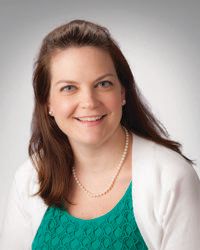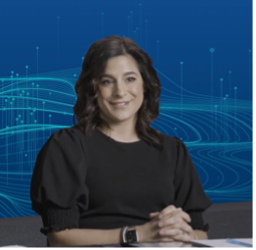CAR T-cell Therapy Remains Preferred Options for Relapsed/Refractory Multiple Myeloma
Experts in the field of multiple myeloma gathered to discuss considerations prior to treatment including frailty and the number of lines of previous therapy a patient has received.
Kathleen Dorritie, MD
Assistant Professor of Medicine
University of Pittsburgh Medical Center Hillman Cancer Center

Joseph Keith Franz, MD
Hematology Oncologist
University of Pittsburgh Medical Center Hillman Cancer Center

Dhaval Rajnikant Mehta, MD
Hematology Oncologist
University of Pittsburgh Medical Center Hillman Cancer Center

Christina Maria Waters, APP
Physician Assistant
University of Pittsburgh Medical Center Hillman Cancer Center

CancerNetwork® hosted a panel discussion on multiple myeloma as a part of a Satellite Sessions program focused on the University of Pittsburgh Medical Center (UPMC) Hillman Cancer Center. Experts discussed how they determine the correct treatment for patients with newly diagnosed and relapsed/refractory myeloma, including assessing the frailty and the age of a patient, the number of treatment lines a patient has received, and the benefits and consequences of using chimeric antigen receptor (CAR) T-cell therapy.
The panel included Kathleen Dorritie, MD, assistant professor of Medicine at the UPMC Hillman Cancer Center, Joseph Keith Franz, MD, a hematology oncologist, Dhaval Rajnikant Mehta, MD, a hematology oncologist, and Christina Maria Waters, APP, physician assistant.
Determining Treatment Options for Patients Who are Frail
Dorritie: Regarding the fitness of patients, what are you using to assess frailty or performance status?
Mehta: Frailty has become very patient-dependent. Certainly, I look at the comorbid conditions. The biggest thing I am looking at when deciding about the treatment is the [status of] diabetes, which medications patients are on, [their ECOG] performance status, what their social support is, etc. One of the things that has been the biggest challenge has been that patients with multiple myeloma have to come in for treatment regimens once or twice a week, so how do their transportation options and other conditions affect the decision? In terms of organ damage, are there compression fractures? Are they in significant pain? Do they have kidney failure? Those are the real factors in decision-making. We then also decide in terms of their age.
Dorritie: Have you incorporated the International Myeloma Working Group [IMWG]-frailty index in your practice?
Waters: Yes, especially in patients who are over the age of 70. You can have a very fit 75-year-old that is a candidate, but we will still utilize that tool. We do not necessarily use it for patients under 70 unless their performance status warns us to do so.
Dorritie: For patients who are frail, what is your go-to for the frontline setting?
Franz: We’re blessed to have data from the phase 3 MAIA trial [NCT02252172].1 Even with a patient who is not particularly frail, there’s [always a chance that the patient] may start standard therapy, get bortezomib [Velcade], [and have difficulty tolerating the treatment]. [We want] to be able to avoid bortezomib in a patient who might not do well, who’s older, or who might have difficulty coming to clinic frequently. The real synergy we see between daratumumab [Darzalex] and an immunomodulatory drug [IMiDs] is just awesome. We’re talking over 5 years of progression-free survival [PFS] and being seen in the clinic every couple of months. It’s hard to say that this is not an awesome regimen overall.
Dorritie: In the MAIA study, there were patients up to age 90, and even those older patients can not only tolerate [treatment] but benefit from a quality-of-life perspective. Have you adopted the MAIA regimen?
Mehta: Yes, I’ve been using the MAIA regimen, which is the daratumumab, lenalidomide [Revlimid], and dexamethasone [DRd] regimen, for my patients who are transplant-ineligible, with all risk statuses. Once lenalidomide became generic, I had challenges getting it, allowing me to consider the bortezomib, lenalidomide, and dexamethasone [VRd] regimen. I had to make several phone calls to [make an] appeal because the standard regimen has been DRd. Now that it became generic, regarding financial toxicities, it got to the point that I had to go to a medical monitor, share the data set, still get denied, and then go in front of a judge to appeal. This is a true story. This has been the result of maybe 1 or 2 payers who have been very stringent on it. I can probably echo some of my community oncologists who see these challenges.
Deciding on Treatment
Mehta: Regarding minimal residual disease [MRD] testing, there are questions about which tests to use, when to do it, etc. It is such a complex concept. MRD testing is available for multiple diseases, including chronic lymphocytic leukemia [CLL] and others. There are several companies out there that say we should be doing [MRD] in bone marrow or that we should be doing it in peripheral blood flow. What is the best way to decide how to make a treatment decision?
Dorritie: We’re not quite ready for primetime there. For our in-house bone marrows, we get flow-based MRD for everybody. We can also order clonoSEQ Assay sequencing-based MRD, which is what’s primarily used in clinical trials. We’re not quite there yet in terms of using it to inform treatment decisions, but it’s something that’s being studied in clinical trials.
Franz: For the first time in the phase 3 IFM 2009 trial [NCT01191060], in the post hoc analysis, we see the power of MRD, and it’s a great tool.2 Regardless of if a patient has had a transplant or not, the outcomes were better. There are a couple of important trials in the process that are going to help us make these decisions. The phase 2 MASTER trial [NCT03224507] was one of the first, but there are a couple more about guiding therapy, intensifying therapy, withdrawing therapy, etc.3 There are 2 validated ways to test MRD in multiple myeloma: there’s high sensitivity flow cytometry, which will get you a sensitivity of 1x10-5. Then there is next-generation sequencing [NGS], which can get up to the sensitivity 1x10-6. The quality control aspects of both are important, particularly with flow cytometry. We like to see it, we like to gather the data, we like to know how deep the remission is, but right now, in terms of making decisions, I think it’s a little bit too early.
Dorritie: You can do it retrospectively. Oftentimes, people will have their bone marrow taken before they’re referred in, but we can use archival tissue to get their tracking sample. Then, moving forward, we could always get a fresh sample. Particularly for a patient who’s struggling with [the question of], do I need to continue maintenance or do I not, it could be helpful in guiding discussions.
Mehta: When we see our patients after 2 years, and they are on dual maintenance, they want to ask, can we stop one of the drug treatments? Would you recommend using some of those MRD [results] to make a decision? Would you stop one treatment, especially the monoclonal antibodies, and just continue the oral regimen indefinitely? Or is there another way you would make your decision?
Franz: This is where we have to look at the patient and maybe break away from the convention a little bit, especially if patients are experiencing crippling adverse effects [AEs], if there’s financial toxicity, or if they are in sustained MRD negative remission for years. Without strong data to support it, if we have a patient who is at standard risk who has sustained MRD negativity for years and there’s a question of too much toxicity or a strong patient preference, it might be reasonable at that time to say, “let’s at least track this and see where we are.” That’s under the presumption that this patient is going to do quite well in the long run. Are there any different practices in your clinic, based on MRD?
Waters: Typically, if a patient has had MRD negativity before the transplant, we will reassess 1 year after the transplant and then again 2 years after maintenance. If patients maintain MRD negativity, and the patient is younger or experience any of those complications, [we might give them that short break]. Recurrence may happen, but maybe the patient benefits from it long-term. At times, if MRD is negative by flow cytometry, then repeating it by clonoSEQ, the NGS test, sometimes we can remove 1 of the 2 drugs. Either the more toxic one or the less convenient one. For example, bortezomib produces some inhibitors every 2 weeks, so this could allow the patient to have some time out of the facility and not come here every 2 weeks. Especially in patients who are younger, given that this is such a chronically treated disease and knowing that this may be a decade worth of therapy, giving them a hiatus or at least some quality of life is very important. That’s where we’re utilizing this in clinical practice, but typically not for patients who are high risk.
Deciding When to Use Car T-cell Therapy
Dorritie: When are you starting to think about a patient needing CAR T-cell therapy? When are you thinking about submitting a referral?
Waters: Typically, after 2 chemotherapy and immunotherapy-based regimens failed the patients, we are at least discussing [CAR T therapy] with them, potentially placing a referral, and then [discussing the options] if the next regimen is not effective enough on the disease. Currently, we have an FDA approval [of ciltacabtagene autoleucel (Carvykti; cita-cel)] for after 4 lines of therapy.4 Hopefully in the next month [idecabtagene vicleucel (Abecma; ide-cel)], we will have the ability to utilize CAR T [therapy] after 3 lines, which would allow us to capture more patients in a quicker process. The challenge with utilizing CAR T after so many lines is the manufacturing process. Sometimes we use [CAR T] in the fourth line after aphaeresis if we can get approval [from the insurance company] because we did begin in the fourth line and need to move quickly to CAR T-cell therapy.
Dorritie: Have you found it challenging to have patients come to the UPMC academic site instead of your office to receive CAR T-cell therapy?
Mehta: We as physicians who have not been fully exposed to the full CAR T treatments are still learning ourselves. As soon as a patient is becoming double or triple refractory with early progression on a maintenance treatment, I tend to call [my colleagues]. Besides the salvage options, I tend to tell my patients that the CAR T therapy has been here, and it’s approved. It’s very promising, and we have learned a lot [about the treatment]. Toxicities are now much more tolerable. I still prep [the patients] if they are transplant-exposed, so they understand how long they have to be admitted. The challenge is with those who have never been exposed. What is the advice we should be telling our patients? I’ve seen patients with lymphoma and others up to 85 years old that can handle CAR T therapy; is that true for B-cell maturation antigen [BCMA] CAR T-cell therapy? Is age a barrier? Is there any way that we should be preparing our patients in the community?
Dorritie: First and foremost, it’s important to stress how efficacious CAR T can be. For example, in the phase 1b/2 CARTITUDE-1 trial [NCT03548207] study leading to FDA approval, the overall response rate [ORR] was greater than 95%, which is unheard of in a heavily pretreated population.5 Similarly, in the phase 2 KarMMa study [NCT03361748] study, the ORR was [almost] in the 80% range.6 Sometimes, [you will mention this first to] patients and say, this treatment offers you benefits that a typical salvage regimen, such as selinexor [Xpovio], will not. Certainly, toxicity is a concern. We are better at managing toxicity, though. The higher-grade cytokine release syndrome [CRS] and neurologic toxicity seemed lower than in patients with lymphoma. Even though you may have a 90% rate of CRS, for most of those patients, it’s just a fever. That’s why it’s important to encourage them to come and hear about CAR T-cell therapy. What’s been your experience when talking to a patient who’s been referred in for CAR T-cell therapy?
Franz: It’s so well-written about. There are so many patient advocacy groups, and patient education has become very robust. I often have conversations well before a patient would even be eligible or need CAR T. Obviously, multiple ongoing studies are looking at the efficacy [of CAR T] in patients who are newly diagnosed. It’d be very interesting, in the next few months or year, if we have more options for CAR T in terms of availability and FDA approval of prior lines of therapy before patients being refractory. It’s going to be a very challenging discussion and decision if CAR T is suddenly available after the first or second line of therapy.
Understanding Unmet Needs in the Multiple Myeloma Space
Dorritie: I’d like to discuss [what my colleagues think regarding] unmet needs and future perspectives on the treatment of patients with newly diagnosed and relapsed refractory myeloma.
Franz: It will be important to optimize patients and understand a post-BCMA relapse, whether that be bispecific antibodies or CAR T-cell therapy, and get a sense of the biology vs our other targeted agents, such as a GPRC5D therapy. Sequencing these novel immunotherapy agents is going to be critically important. We can see unprecedented efficacy with [options] like BCMA CAR T, but it’s not curative. The question remains, is there a role for maintenance after these types of therapies, specifically with targeted agents that are already available or other immune-based therapies, like BCMA and GPRC5D therapies together? It’s important to understand how to optimize them and get the maximum benefit from each treatment.
Mehta: Myeloma is now becoming a heterogeneous disease, so trying to look for those signals and moving to more personalized treatments with genes, and MRD, or by combination of treatments, is important. One of the drugs we see signals for is venetoclax [Venclexta], and we will continue to learn more about these several options. Secondly, I will continue to work in collegiality with everyone, especially as BCMA and bispecific science continues to evolve. We have unprecedented activity, and it’s going to continue on to more second and third-line treatments. The third point is how treatments are eventually going to be rolled out to the community and how we can continue to make sure we are following the right follow-ups and survivorship issues as we continue to evolve with new lines of treatments.
Waters: Constant communication is important. [Treating] every patient individually is important because multiple myeloma is multiple diseases. There are variants where a patient has indolent lymphoma and was diagnosed 2 decades ago and another where a patient has undergone 3 lines of therapy in 6 months. We should take an individualized look at each patient with multiple myeloma and understand that we should not utilize all our tools too quickly just because we can. We should think about trying to maintain the longevity of the patient by working individually with each patient.
Dorritie: That seems to be the theme, how do we sequence treatment in multiple myeloma? This has been the question for the past decade with the advent of all our new therapies.
References
1. Bahlis N, Facon T, Usmani SZ, et. al. Daratumumab plus lenalidomide and dexamethasone (D-Rd) versus lenalidomide and dexamethasone (Rd) alone in transplant-ineligible patients with newly diagnosed multiple myeloma (NDMM): updated analysis of the phase 3 MAIA study. Blood. 2022;140(suppl 1):1875. doi:10.1182/blood-2019-123426
2. Attal M, Lauwers-Cances V, Hulin C, et al. Lenalidomide, bortezomib, and dexamethasone with transplantation for myeloma. N Engl J Med. 2017;376(14):1311-1320. doi:10.1056/nejmoa1611750
3. Costa LJ, Chhabra S, Medvedova E, et al. Minimal residual disease response-adapted therapy in newly diagnosed multiple myeloma (MASTER): final report of the multicentre, single-arm, phase 2 trial. Lancet Haematol. 2023;10(11):e890-e901. doi:10.1016/s2352-3026(23)00236-3
4. FDA approves ciltacabtagene autoleucel for relapsed or refractory multiple myeloma. FDA. News release. February 28, 2022. Accessed November 30, 2023. https://tinyurl.com/36utmn6z
5. Berdeja JG, Madduri D, Usmani SZ, et al. Ciltacabtagene autoleucel, a B-cell maturation antigen-directed chimeric antigen receptor T-cell therapy in patients with relapsed or refractory multiple myeloma (CARTITUDE-1): a phase 1b/2 open-label study. Lancet. 2021;398(10297):314-324. doi:10.1016/s0140-6736(21)00933-8
6. Usmani S, Patel K, Hari P, et al. KarMMa-2 cohort 2a: Efficacy and safety of idecabtagene vicleucel in clinical high-risk multiple myeloma patients with early relapse after frontline autologous stem cell transplantation. Blood. 2022;140(Supplement 1):875-877. doi:10.1182/blood-2022-162469
EP: 1.Determining Candidates for Transplant in Newly Diagnosed Multiple Myeloma
EP: 2.Quad Therapy and Risk Stratification in Multiple Myeloma
EP: 3.CAR T-cell Therapy Remains Preferred Options for Relapsed/Refractory Multiple Myeloma
EP: 4.Consolidation and Maintenance Therapy Considerations in Multiple Myeloma
EP: 5.Multiple Myeloma: Treatment Considerations and Role of MRD
EP: 6.Treatment Decision-Making and Assessing Frailty in Multiple Myeloma
EP: 7.Later-Line Therapy in Multiple Myeloma
EP: 8.Emerging Research in CAR T-Cell Therapy in R/R Multiple Myeloma
EP: 9.Bispecific Antibodies in Relapsed/Refractory Multiple Myeloma
EP: 10.Bispecific Antibody Selection in Multiple Myeloma
EP: 11.Future Perspectives and Unmet Needs in Multiple Myeloma
Navigating AE Management for Cellular Therapy Across Hematologic Cancers
A panel of clinical pharmacists discussed strategies for mitigating toxicities across different multiple myeloma, lymphoma, and leukemia populations.